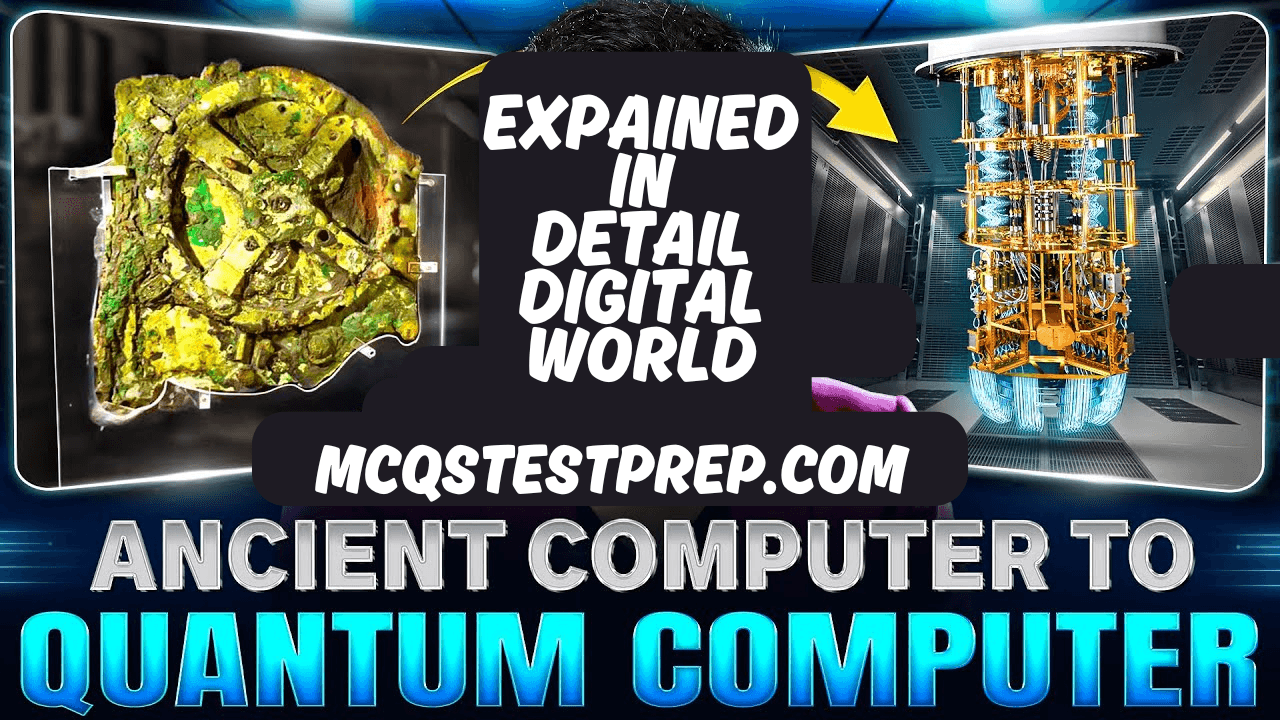World’s Fastest Supercomputer: El Capitan’s Unbelievable Speed and Scale
Now this will blow your mind. This is the world’s fastest supercomputer El Capitan, made at a cost of 5000 crore rupees, which covers at least half a kilometer of space and does two quintillion calculations per second. One nonillion times means this many thirty zeros after one, that is, to do such complicated calculations, today’s most perfect supercomputers will take 500 trillion times more time than the current age of Brahman.

Google’s Willow Quantum Chip: A Leap Beyond Classical Physics
Google’s Willow chip is touted as not just another technology breakthrough, but an evolution. In under 5 minutes, the chip can solve a problem that would take today’s most powerful computers 10 septillion years. So far, our poor computers were able to double their processing power only in three to four years. But with the advent of these quantum computer chips, the whole game will change, boss. The secrets of the universe are revealed.
Unveiling the Future: Quantum Computers and the Secrets of the Cosmos
There may be calculations of where alien life may exist in these billions of planets, there may be technology to fly at the speed of light, there may be the concept of creating worm holes, there may be the cure of all the diseases of the human body forever. First of all, with the use of quantum computers, the life of humans will easily be prolonged by a hundred to two hundred years. We can even become immortal forever by uploading consciousness to a chip or robot. All these technologies.
Quantum Challenges: Why Quantum Computers Are Not Yet Mainstream
Are preventing these quantum computers from becoming fully operational in every home like the normal computers of today. Today, not only Google but also the biggest companies like Microsoft, Amazon, IBM, Intel, etc. who are involved in this race are sweating to solve this tricky problem.
The Quantum Edge: How Google Outpaced Tech Giants in Quantum Race
But what new invention did Google show that it left all these companies behind. An interesting thing to see is that Google’s quantum computer looks like this. But why do they look so different? What are the differences in their technology? Which is better and which is worse? And if we talk about Google, then what will Google be able to do with this new quantum chip? Let’s understand today’s technology.
Understanding Quantum Mechanics: The Engine Behind Unimaginable Speed
How is a quantum computer different from a classical computer? On what quantum principles does it perform calculations exactly? How is it billions of times more powerful? And what problems are scientists facing right now in this modern.
A Treasure From the Past: The 2000-Year-Old Greek Mechanism Discovery
On September 15, 1990, some Greek divers were diving on the island of Auntie Thera near Greece and suddenly they found a sunken ship. This 2000-year-old sunken ship had a hidden treasure.
The Ancient Machine That Shocked Modern Science
A very amazing kind of machine was found in the treasure, which was looking something like this. It was a 2000-year-old machine. And then after researching on it for the next 50 years, when a scientist Derrick Price saw it through X-rays to know.
The Antikythera Mechanism: A Precise Ancient Astronomical Computer
He was surprised to see that it was not an ordinary device at all but it was a modern device which had at least 37 interlocking gears made of bronze and some of the gears were smaller than one millimeter, they were so coordinated. This device was an astronomical device, which calculated the solar and lunar eclipses, phases of the moon, positions of the planets and stars and predicted their position in the future and which events would happen.
Redefining “Computer”: The Real Meaning Behind the Term
Have you ever wondered why it was called a computer? Computers look like this, right? So in what sense is this device a computer? Then what are some of today’s electronic gadgets like TV, microwaves, geysers.
The ABCD of Computing: What Makes Any Device a “Computer”?
For this, let us understand in short AB CD what a computer is in the first place. Look, in very simple language, computer means any device that computes, that is, calculates and gives the correct outcome.
A Mechanical Marvel: How the Antikythera Mechanism Was a Precursor to Today’s Algorithms
At that time, Anti-Kathara Mechanism was also coding the principles of the universe into the movement of machines through numbers of mats. Just like today’s modern computers are coding the principles of IT and electronics through algorithms.
Pascaline: The Mechanical Roots of Today’s Calculators
In the year 1642, a 19-year-old French mathematician created an old prototype of today’s modern calculators and computers, which again, functioned mechanically. Gears and cranks were used in this too, which displayed the corresponding answers of the input numbers by rotating the dials.
This old calculator was named Pascaline and the genius was none other than Blaise Pascal who was very inspired by the design of Leonardo DaVinci’s calculator and he enhanced that design and made it a reality. Now Pascal And it could only do addition and subtraction. Not even multiplication and division. But this model inspired a bright German scientist Gottfried Leibniz a lot. And he fixed it and made it.
Limitations of Early Calculators: The Need for Advanced Mathematics
Now this calculator was definitely quite advanced for that time but it could not do many important math calculations like for example, calculating polynomial equations, you remember we learned these equations in algebra in childhood, here fx is the polynomial function, that is, the main answer which we have to find.
How could any calculator calculate such an equation at that time? Also, finding the logarithmic and trigonometric value of numbers was also impossible for calculators at that time. And, by the nineteenth century, as you know, the Britishers had become explorers and colonizers. Therefore, in navigation, sailing, even engineering and banking, there is a great need to do advanced and fast calculations. And for this, people used to use printed tables of maths that looked like this.
The Risk of Manual Errors: A Naval Disaster That Changed Computing
Now do you know who made these important tables? We humans make calculations manually and we humans are experts in making mistakes. For this, a ship may get lost in a storm in the ocean or the structure of a building may get built wrongly, as happened in 1707.
Due to these wrong manual calculations, not one but four ships got destroyed simultaneously and a total of 2000 sailors were lost. This incident is called the Two Sicily Naval Disaster. And so there was a person who raised a big alarm about this silent danger. It was none other than our father of modern computers, Charles Babbage.
Charles Babbage: The Visionary Behind Mechanical Computing
Those who had given so much money to the government at that time, so much that they had even calculated how many steps a person will take in his life which is approximately 20 crores. That is why many times people considered Charles Babbage a psycho because he often used to work on many unconventional subjects, all of which.
Misunderstood Geniuses: Why Innovators Are Often Seen as Eccentric
From Isaac Nuttin to even today’s modern day Steve Jobs to Elon Musk, everyone considers them a bit crazy because these people do not work in today’s technology but in the technology of ten to fifty years ahead. Like today all the prominent innovators.
High-Demand Future Skills: The Age of AI and Emerging Technologies
Artificial Intelligence, Machine Learning, Robotics, Data Science, Cyber Security, IoT, Blockchain, all these are skills which are most highly in demand in the future and in fact even today in the market and hence these are very well-paid skills today with salaries going up to 17 lakhs per annum. Take Google, Amazon, Infosys and all the top MNCs, they keep hiring for such profiles constantly.
LPU’s New-Age Learning Model: Future-Ready Curriculum for Students
There are very limited colleges which will give you the opportunity to learn such new age skills along with your conventional subjects. But LPU located in Jalandhar, Punjab has completely revolutionized education for its students. LPU has designed such a unique system in which they have seamlessly integrated all these future proof skills in the curriculum of the students so that children need theory.
No matter how many books you read, when you finally come to the real world, there is a huge difference between theory and practical. To bridge this gap, LPU offers Work Integrated Programs where students are given the opportunity to learn new skills along with their subjects so that they do not just take a degree and become a part of the herd mentality but after graduation they have real world industry level exposure. Plus, regular sessions of national and global industry leaders are conducted here.
LPU’s Edge: Updated Curriculum, Hackathons, Certifications and More
Even today, where we keep studying completely outdated syllabus in Conventional Engineering Colleges, LPU keeps updating its curriculum regularly so that students remain updated with the latest technologies and market trends. Many National and International level Hackathons and Coding Challenges are also conducted in LPU so that students can showcase their talent globally and plus, students can also achieve globally recognized certificates during their graduation tenure itself.
LPU’s Startup Ecosystem and Exceptional Placement Record
All the industry projects get best evaluations by working here. And the most unique offering I found is their extremely startup friendly environment. Where students get to express their brilliant ideas. And if we talk about placements, as a student reaches the final year of his graduation, more than 2000 companies start job placement drives in LPO campus, including foreign companies like Google, Microsoft.
In 2023, LPU University created a new record by giving placements to 90% of its students. The highest package offered was Rs 3 crore. And Vishwala does not make a dull boy of his work and no play.
LPU’s Alumni and National Pride
Maybe that’s why India’s champions like Olympic gold medalist Nirer Chopra and bronze medalists Lovlina, Borgo Hahn are alumni of LPU. So you also started learning not only technical knowledge but also the tech savvy emerging skills of the 21st century.
The Birth of the Difference Engine: A Mathematical Milestone
He told the government in figures that the government was losing at least 2-3 million pounds every few months due to such outdated, manually printed mat tables and to pitch a solution to this problem, he introduced his revolutionary computer model, the difference engine, which would later become the inspiration for modern computing.
From Difference to Analytical Engine: The Origin of Programmable Machines
The Difference Engine was his first computer model that could easily solve such polynomial equations and print their values in real time. It could also find logarithmic and trigonometric values. But he did not stop there. His computer was able to do complicated mathematics but was not programmable like today’s modern computers. But now his computer was such that whatever input number you put in, its output answer would come out directly. You could teach the computer new knowledge or languages through some codes.
The Analytical Engine: A Visionary Step Toward the Modern Computer
Today we cannot even imagine computers without programming. And this very thought gave birth to the design of his most sophisticated model of the analytical engine which became the concept of the world’s first programmable computer. Concept because unfortunately it was so ahead of time that it could not even be fully prepared due to lack of funding.


